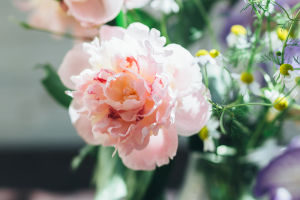
Glorious Tulip Symbolism

Tulip, an herbaceous plant belonging to the genus Tulipa within the Liliaceae family, holds the distinguished honor of being the national flower of Türkiye, Kazakhstan, and the Netherlands.
Exhibiting the unique features of 3-5 flowers and leaves, tulips dazzle with their single, terminal, large, and vibrant blossoms, typically gracing the world with their radiant presence from April to May.
The sheer beauty and historical significance of the tulip render it a subject of paramount importance in the realms of botany, horticulture, and culture. Revered globally as the "Queen of Flowers," tulips have transcended their botanical status to become symbols of fashion and internationalization.
Related
 Herbal Peony is mesmerizing in its elegance and beauty.
Herbal Peony is mesmerizing in its elegance and beauty.
 A fragrant addition to your home.
A fragrant addition to your home.
 Explore the art and etiquette of flower arrangement, where the beauty of nature and the elegance of society are explored.
Explore the art and etiquette of flower arrangement, where the beauty of nature and the elegance of society are explored.
 Cacti: Hardy, Diverse, and Armed Survivors of the Americas.
Cacti: Hardy, Diverse, and Armed Survivors of the Americas.
 Simplified methods of extracting essential oils.
Simplified methods of extracting essential oils.
 Creating interesting houseplants is a creative process that can be tailored to your interests and creativity.
Creating interesting houseplants is a creative process that can be tailored to your interests and creativity.
Tulips emerge as stellar candidates for adorning flower beds and creating stunning floral sea arrangements, as well as for adding charm to potted gardens.
The grandeur of mass tulip plantings can transform landscapes into breathtaking vistas, while their status as one of the world's most beloved cut flowers ensures their inclusion in bridal bouquets worldwide.
These enchanting flowers manifest in a diverse palette of colors, ranging from fiery reds and sunny yellows to pristine whites, regal purples, and delicate pinks.
Their forms are equally diverse, some gracefully hanging upside down, while others stand tall and proud. Generally endowed with generous, intricate petals and exquisite shapes, tulips hold a unique allure that places them in a league of their own.
Native to the Mediterranean coast, Central Asia, and Türkiye, tulips found their European epicenter in the Netherlands during the 17th century. The Dutch introduced these splendid blooms to Europe, and they swiftly integrated into the cultural fabric of the continent, becoming an essential part of European traditions.
The growth habits of tulips are noteworthy, as they typically emerge during the spring season, thriving under full sunlight and necessitating well-drained soil. Although their blooming period is relatively brief, the allure and fragrance of tulip flowers are nothing short of captivating.
Tulips embody the symbolism of rebirth due to their early spring blossoming. They patiently lie dormant in the soil throughout winter, reawakening each spring, thus making them powerful symbols of renewal.

This symbolism endows tulips with a thoughtful gift choice for various occasions, such as congratulating someone on a new job, supporting a friend relocating to a different city, or offering solace to a couple embarking on a fresh chapter after ending a relationship.
In Western culture, tulips frequently symbolize love and celebration, making them a common sight on Valentine's Day, symbolizing romance and affection. Furthermore, tulips have a rich language of flowers, with each color conveying a distinct message. For instance:
White Tulips: Symbolize purity and pure love, representing the most sincere and selfless affection in romantic relationships.
Pink Tulips: Convey love and gratitude, expressing emotional appreciation and friendly sentiments, often associated with sweet first loves.
Yellow Tulips: Symbolize friendship and happiness, extending warm wishes for a friend's well-being and joy.
Purple Tulips: Signify mystery and respect, conveying admiration and curiosity towards someone's enigmatic nature.